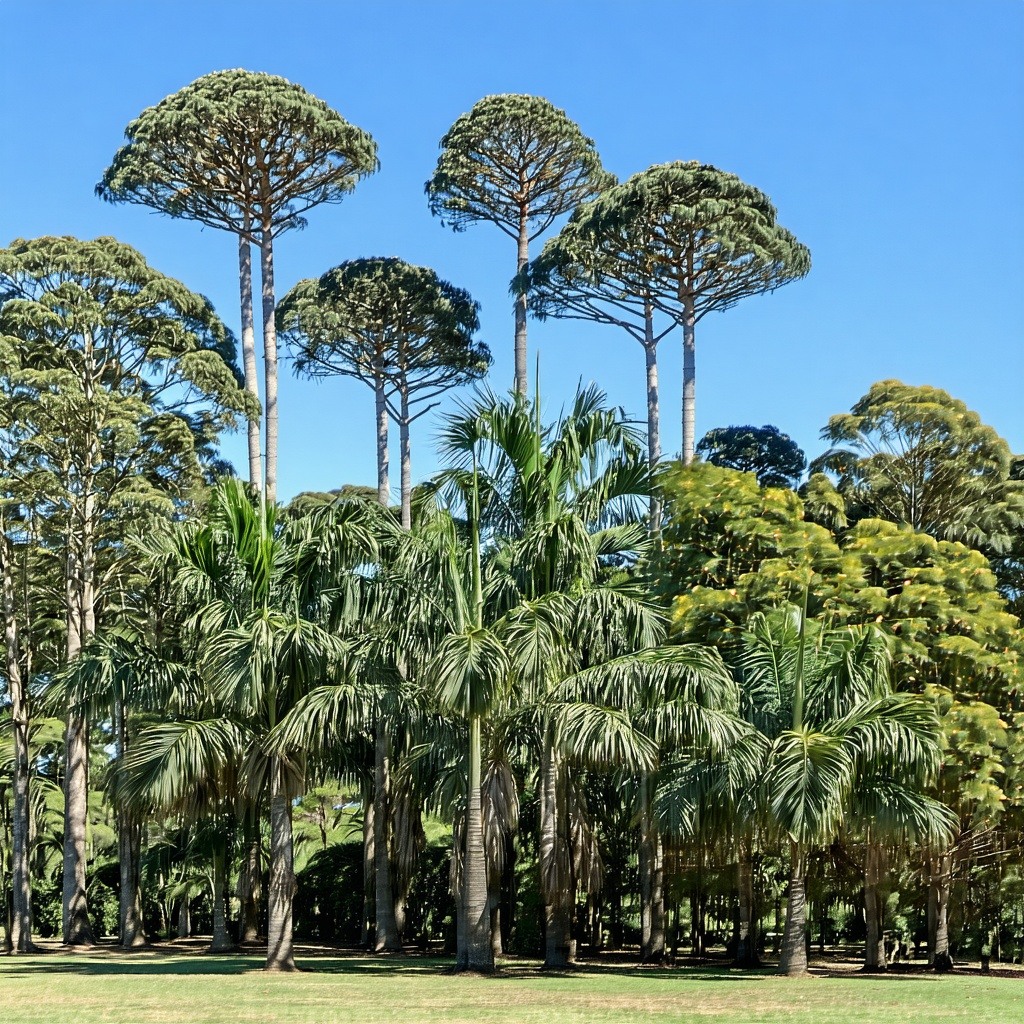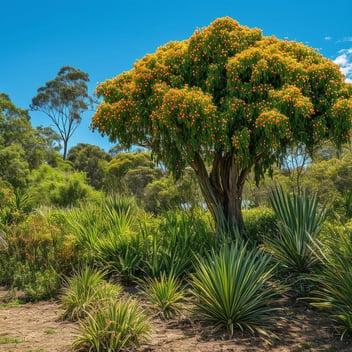Tropical Trees That Flourish in South East Queensland
Introduction
South East Queensland (SEQ) is a region blessed with a climate that allows for the cultivation of a diverse array of tropical trees. Integrating these species into local gardens not only elevates the aesthetic appeal but also contributes to ecological sustainability. The lush foliage, vibrant blooms, and unique forms of tropical trees can transform ordinary landscapes into verdant paradises.
Understanding SEQ's Climate
SEQ's subtropical climate is characterized by warm, humid summers and mild, dry winters. This climatic pattern creates an environment where many tropical tree species can thrive. The ample rainfall during the summer months supports vigorous growth, while the relatively mild winters allow these species to persist without significant stress.
Top Tropical Trees for SEQ Gardens
Bunya Pine (Araucaria bidwillii)
The Bunya Pine is a majestic conifer native to Queensland, renowned for its towering height and distinctive dome-shaped canopy. Historically significant to Indigenous Australians, its large seeds were traditionally harvested as a food source. In SEQ gardens, the Bunya Pine serves as a striking focal point, requiring ample space and well-drained soil to accommodate its extensive root system.
Solitaire Palm (Ptychosperma elegans)
The Solitaire Palm is a slender, elegant palm endemic to Queensland, featuring a smooth grey trunk and feathery fronds. Its graceful appearance makes it a popular choice for ornamental planting. This palm thrives in SEQ's climate, preferring moist, well-drained soils and partial shade, though it can tolerate full sun once established.
Brown Tuckeroo (Cupaniopsis flagelliformis)
The Brown Tuckeroo is a small to medium-sized tree native to eastern Australia, including SEQ. It boasts attractive foliage and produces small, colorful fruits that attract birds, enhancing local biodiversity. This species is well-suited to SEQ gardens, tolerating a range of soil types and exhibiting resilience to coastal conditions.
Tropical Birch (Betula nigra)
Also known as the River Birch, the Tropical Birch is one of the few cold-climate trees that adapt well to SEQ's subtropical environment. It features distinctive peeling bark in shades of cinnamon and cream, adding textural interest to gardens. This tree prefers moist, well-drained soils and can thrive in full sun to partial shade.
Eumundi Quandong (Elaeocarpus eumundi)
The Eumundi Quandong is a tropical rainforest tree native to Queensland, valued for its dense, glossy foliage and small, decorative fruits. It serves well as a screening plant or ornamental specimen in SEQ gardens. This species flourishes in well-drained soils with regular moisture and benefits from protection against strong winds during its establishment phase.
Planting and Maintenance Tips
Successful cultivation of tropical trees in SEQ begins with proper soil preparation, ensuring good drainage and adequate fertility. Regular watering, particularly during dry periods, supports healthy growth, while mulching aids in moisture retention and temperature regulation. Fertilization with balanced nutrients fosters vigorous development, and routine pruning helps maintain desired shapes and removes any diseased or damaged limbs.
Environmental and Aesthetic Benefits
Incorporating tropical trees into SEQ gardens enhances biodiversity by providing habitats and food sources for native fauna. Their lush canopies offer shade, contributing to cooler microclimates and reducing urban heat islands. Aesthetically, these trees introduce exotic textures, colors, and forms, elevating the visual appeal and potentially increasing property values.
Potential Challenges and Solutions
Gardeners may encounter challenges such as pest infestations or diseases affecting tropical trees. Implementing integrated pest management strategies and selecting disease-resistant species can mitigate these issues. Environmental stresses, including drought or extreme temperatures, can be alleviated through proper irrigation practices and the use of protective mulches.
Conclusion
Embracing tropical trees in South East Queensland gardens offers a harmonious blend of beauty and ecological function. By selecting species well-suited to the local climate and providing attentive care, gardeners can cultivate landscapes that are both resilient and enchanting, reflecting the rich botanical heritage of the region.




